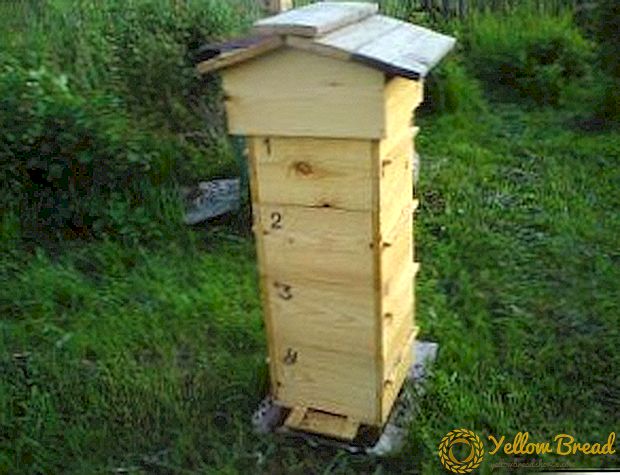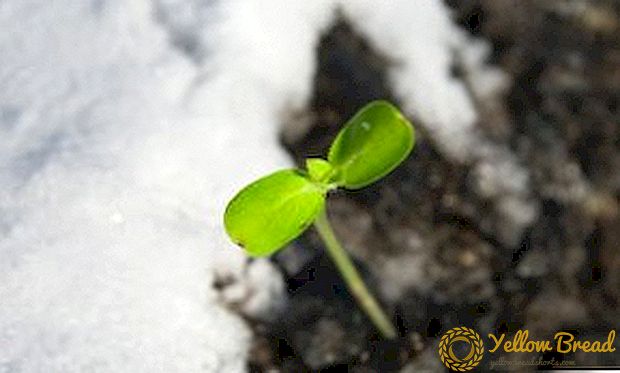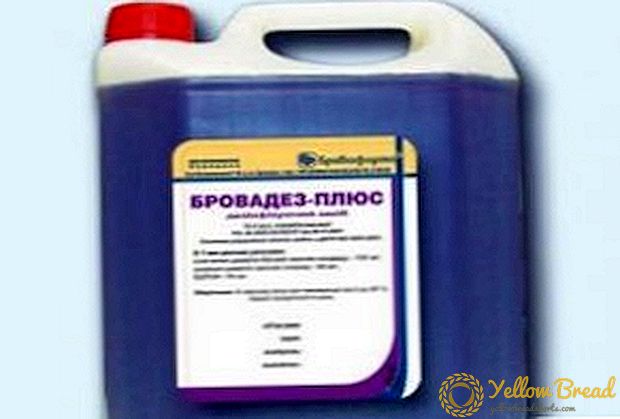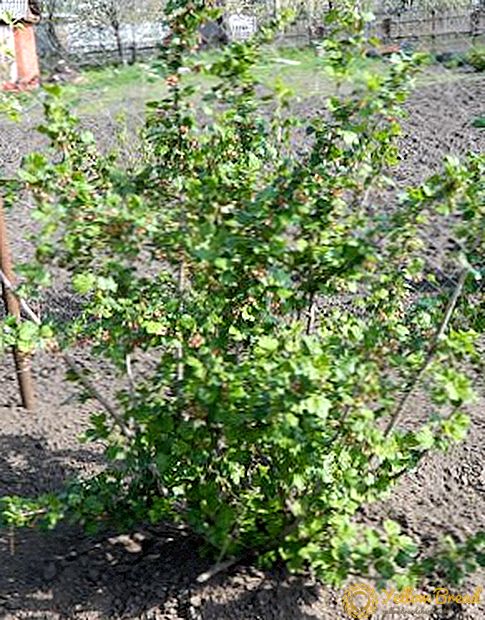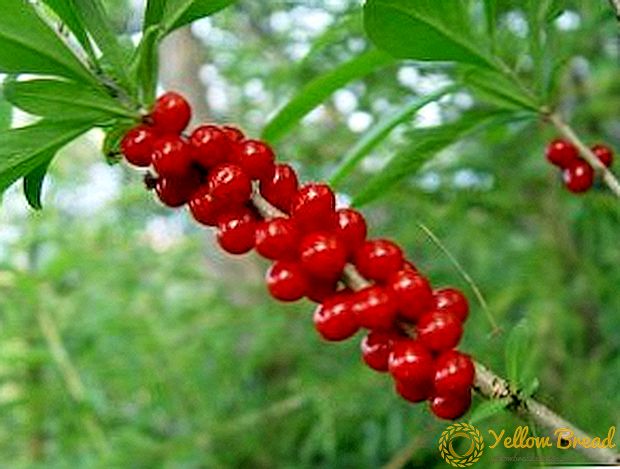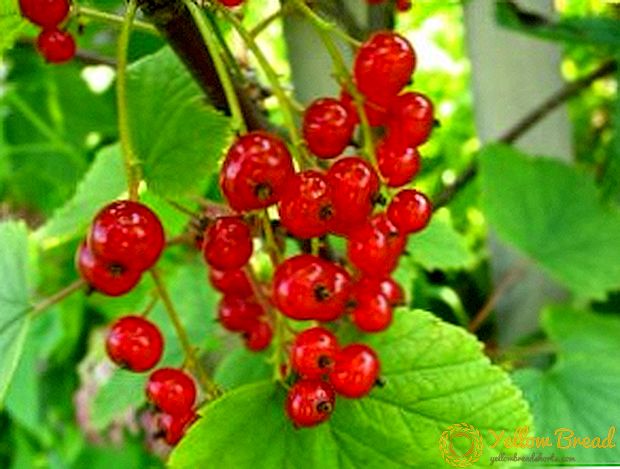
Well, who does not love, sheltering in the shade of grapes, try his juicy, ripe and tasty berries?
The appearance of this amazing shrub will not leave anyone indifferent, and with its dense vegetation and appetizing bunches it can decorate any estate.
Having ennobled the dacha with such a plant, we all strive for one thing - to gather a rich harvest. Pruning grapes is the most important process on the road to success. Let's talk about it.
Pruning for fruiting
Autumn pruning of grapes is an inevitable stage in the care of vineyards. Winegrowers know that if you do not perform this procedure in a timely manner, the vine grows heavily, and the grapes become small and lose their taste.
Moreover, due to the formation of bushes in the fall, the buds bloom earlier, before the sap flow, and an earlier harvest should be expected.
What are the terms of pruning grapes
Usually pruning of grapes is carried out in October - November, after the leaves fall. Why in this period?
Firstly, it gives the opportunity to better cover the vineyards from frost, that is, it is part of the preparation for the winter.
Secondly, in spring, a fragile vine needs to gain strength to move away from the harsh winter, and the cuts made in spring, during the sap flow, can destroy the plant. In the summer, to increase yields, turn to other methods: break off unnecessary branches, cut off leaves, pinch shoots on bushes, mint, stepson.
All these methods help the clusters to get more sunshine, reduce dampness and prevent the roots from rotting; they are preventive measures to prevent diseases.
That is why the autumn period is the most successful for pruning and development of the grape bush. The first are processed frost-resistant grapes and vineyards in covering areas, the latter are poorly frost-resistant.
Early ripening varieties
There are many different varieties that belong to the earliest. For varieties of early ripening, the growing season is on average from 115 to 120 days and the optimum maturation temperature for them is + 24-25 ° C.
Each of the varieties has its own characteristics and terms of pruning. Consider some rules.

Everyone knows such a variety as Muscat summer. Because of its richness of taste, many compare its taste with medicinal, but there are a lot of admirers of this variety. Of course, huge green clusters with elongated berries and beckon. The variety is resistant to disease, but is afraid of frost. The vine is cut on 6-8 buds.
Sort Glasha has a bluish-purple color and, despite the fact that it may look like unripe - is quite sweet. This variety should be cut to 8 buds.
Sort Dove refers to technical varieties and is not very afraid of frost. The berries are small, round, blue. Crop on 7 buds.
Natusya - Another blue-purple grape variety with elongated berries and large clusters. There may be a lot of them, which threatens to overload the bush. Fruit vines should be cut to 6-8 buds.
Kishmish Aksai - well, just handsome! It has a beautiful crimson color and an appetizing look. It is famous for resistance to various diseases. It is also trimmed on 6-8 buds.
There are a lot of early varieties, among them: Kishmish Jupiter, Pleven European standard, Victoria, Bulgaria.But Timur, White Hybrid, Sphinx, Early Russian - are varieties of very early ripening.
Late maturing varieties

For varieties of late ripening, The growing season is 140 to 150 days. and the optimum temperature of ripening for them is + 29-31 ° C.
These varieties include variety Kutuzovskywhich ripens in the second half of September. Berries are rather large, oval-shaped and dark blue in color. Not afraid of frost. Crop on 4 eyes.
Ataman - also applies to late varieties (about 145 days). It has oblong berries of reddish-purple color with dense skin. Crop from 8 to 10 eyes.
Sort Riddle has green elongated berries and is prone to overload. Not afraid of frost. Crop should be 10 eyes.
Rusmoletta - refers rather to mid-late varieties. The berries are white and fairly large in size, with nutmeg flavor. Subject pruned on 7 eyes.
Among the later varieties are also Galan, Kokur white, Puhlyakovsky, Saperavi, Clairet, Agadai.
Trimming technology
Trimming should be carried out only with sharp shears. Otherwise, the vine will be damaged. Cut better in internodes to save buds.
The length of pruning grapes directly depends on the thickness of the vine: the thicker the vine, the longer the shoot needs to be cut. Such cut shoots in terminology are called substitution knots, fruiting vines - fruit arrows, and peepholes - buds.
Trimming is short, medium and long.
Winegrowers mainly use three techniques of autumn pruning:
short: on the bitch of substitution remains from 2 to 4 eyes, and on the fruit shooters of the whole bush there are 20-40 eyes. Such pruning is carried out for grape varieties, fruit-bearing mainly lower shoots;
average: on a replacement bitch, 5-7 eyes should be left, and the average number of eyes on a bush should be at least 40-50. This type of pruning is used to preserve stronger and frost-resistant buds.
long: on the replacement knot, up to 15 eyes are preserved, and the total number of buds is on average 40-50. The technology of such pruning is used for rapidly growing vineyards and low-yield grape varieties.
Load bushes
Of great importance when pruning grapes are local climate, age of shoots, general condition of a plant. From these conditions depends on the number of kidneys that must be left.
Thus, determine the load of the bush. The degree of load of the bush and the length of pruning fruit arrows caused by how much they have grown throughout the current year.
If there were many processes, they are undeveloped and weak, and the grapes themselves are small and sour, then this indicates an excessive load on the plant. For such cases use short pruning, and the bush in the spring must be fertilized. If the shoots developed poorly throughout the year, the harvest was low, then the load on the bush is reduced.
The most successful load of the bushes is the load at which the grape harvest exceeds the previous year and preserves the taste of the berries, characteristic of the variety.
Take care of your grapes, and he will certainly thank you generously!

